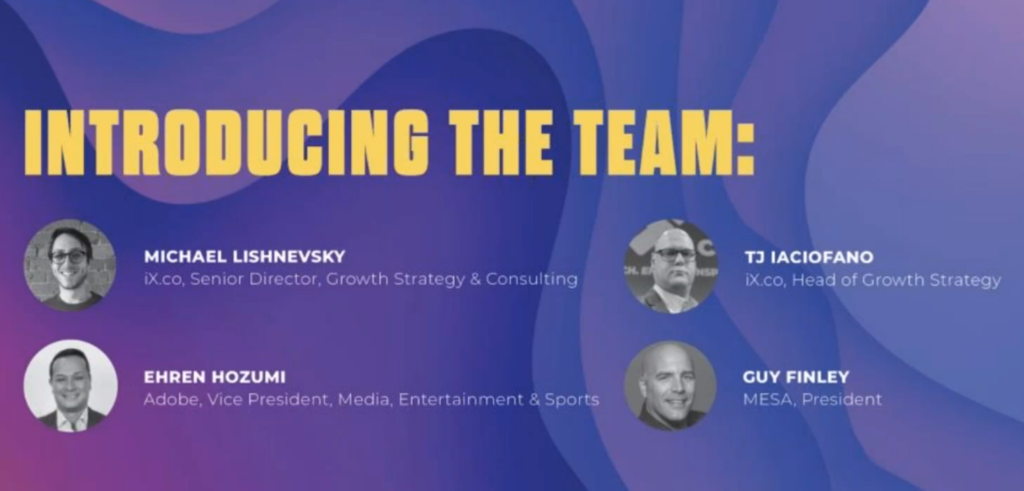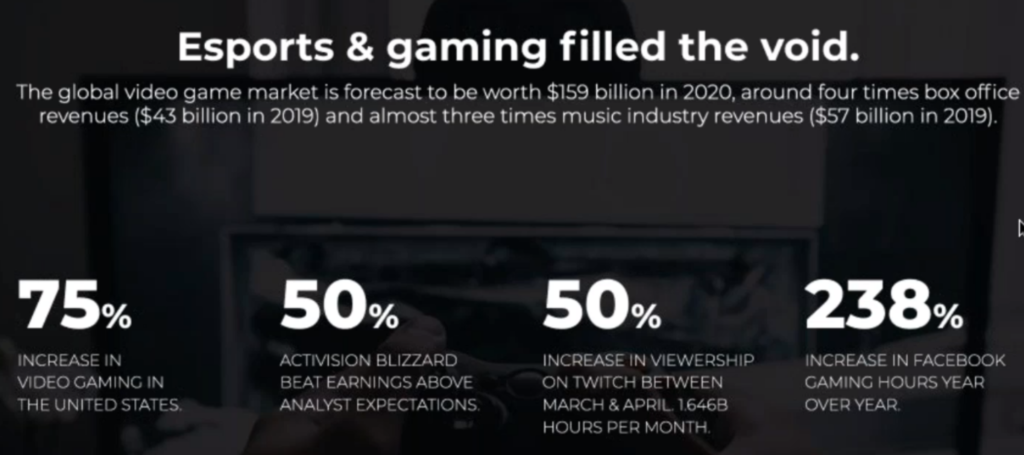Connections

Adobe Exec: Pandemic Has Created Challenge and Opportunity for M&E Industry
Story Highlights
The ongoing COVID-19 pandemic has created challenges and opportunity for every corner of the media and entertainment industry, according to Ehren Hozumi, VP of media, entertainment and sports at Adobe Experience Cloud.
For “the industry as we know it – whether you’re in TV, sports, music, eSports or anything in between – the concept of digital has evolved, where digital is no longer just a channel,” he said June 25 during the webinar “Changing the Game: How M&E Has Adapted During the Global Pandemic.”
Digital has “really become the forefront of every single customer interaction that you might have,” he said, adding: “You might think of it as digital first. You might think of it as digital only, as some of us are now experiencing.”
This is impacting the way we think about consumer and fan engagement, as well as “the way we think about technology and the way that it might sort of help to scale to meet the demands of consumers digitally,” he told viewers. It also impacts “the way we think about organizations and people,” he noted.
“A lot of us in the industry have been preparing for this” new reality and might have had a 3-10 year plan to become a digital-first organization, he pointed out. However, “we don’t have that luxury any longer, as consumers are demanding we know who they are, what they want — and sometimes in that first interaction,” he said.
“Without a physical component to that, I think the challenge in front of us is real –but it is an opportunity that I think many in the industry have begun to solve for,” he told viewers.
 Executives at digital media and solutions company iX.com, a division of Infront Sports & Media, went on to expand upon the trends being seen in the M&E sector and make predictions about what we can expect to see in the near future.
Executives at digital media and solutions company iX.com, a division of Infront Sports & Media, went on to expand upon the trends being seen in the M&E sector and make predictions about what we can expect to see in the near future.
“Clearly, the M&E space is being disrupted, and there’s a certain lack of predictability, I think, in what’s coming next,” according to T.J. Iaciofano, head of commercial strategy at iX.co.
“And we think of this as more about agility than anything — agility on the services side, agility on the platform side, on the messaging side, the marketing side,” he told viewers.
“I think there’s a first mover advantage and there’s a digital first advantage. But there’s also things that you with your brands can start to think about now if you haven’t already begun,” he noted.
“The industry as a whole has been impacted” by the pandemic, Michael Lishnevsky, senior director of Growth Strategy & Consulting at iX.co, went on to tell viewers. It has “required many of these brands to really go through a digital transformation” and that has included a shutdown in some cases, he noted.
“ESports, unlike entertainment and sports, was able to very quickly overcome some of the challenges that they were facing” by moving strictly to online play, he pointed out. “There were challenges” to overcome, including latency, but “many of the leagues” were able to overcome them, he said.
On the other hand, it’s been harder for traditional sports to overcome challenges – and, in some cases, “drastic challenges,” he said, pointing as an example to the postponement of the Summer Olympics until next year. However, some sports have overcome challenges and have started to play, albeit without fans in the stands, he said.
“At the beginning of COVID, we saw… new media” and content “begin to emerge,” he noted. After all, “many companies weren’t able to produce live sports and they had to fill those spots” with other content, including for primetime, he said.
 Consumer behavior and investments have changed also, he noted, citing data showing 80% of U.S. and U.K. consumers said they consume more content since the outbreak started, including broadcast TV and online video. Netflix, Disney Plus, Amazon Prime Video and Spotify have seen the largest usage when it comes to Gen Z and millennials, he said.
Consumer behavior and investments have changed also, he noted, citing data showing 80% of U.S. and U.K. consumers said they consume more content since the outbreak started, including broadcast TV and online video. Netflix, Disney Plus, Amazon Prime Video and Spotify have seen the largest usage when it comes to Gen Z and millennials, he said.
There has, meanwhile, been a 30% increase in consumer investments in music streaming relative to pre-COVID levels, positioning that sector for faster growth in the future, he noted. And there has been a 15% rise in consumer investments in at-home streaming relative to pre-COVID levels, positioning that sector for faster growth in the future also, he pointed out.
“We’ve also seen cord cutting accelerated ….at a drastic rate,” he said, noting there was a record 7.6% decrease in cable and satellite subscriptions in the first quarter of 2020. Nearly 2 million subscribers exited from broadcast viewing over the course of Q1, he said, pointing to data showing AT&T lost 900,000 customers, Dish Network was down 413,000 customers and Comcast lost about 409,000 customers. The key issue was that without live sports, some consumers could not justify the hefty price of cable and satellite services, he said.
Meanwhile, “the streaming wars have been expedited,” he noted, pointing to the growth seen by Netflix and Disney Plus, as well as the recent launches of HBO Max and Apple TV Plus, which have helped accelerate cord cutting.
Other trends seen during the pandemic have included the growth of watch parties in which streaming subscribers watch content at the same time from different locations, he said.
Lishnevsky went on to make four predictions based on the way the pandemic has changed human behavior and the way customers are now interacting with brands: 1. Brands will increasingly invest in direct-to-consumer experiences to gain influence over their fans. 2. Augmented entertainment will increasingly blend our physical world with the “metaverse” – the total shared space across all augmented, virtual and mixed reality segments. 3. Brands will increasingly build digitally immersive experiences for at-home fans. 4. Demand for digitally-enabled venue experiences will enable hyper personalization.









